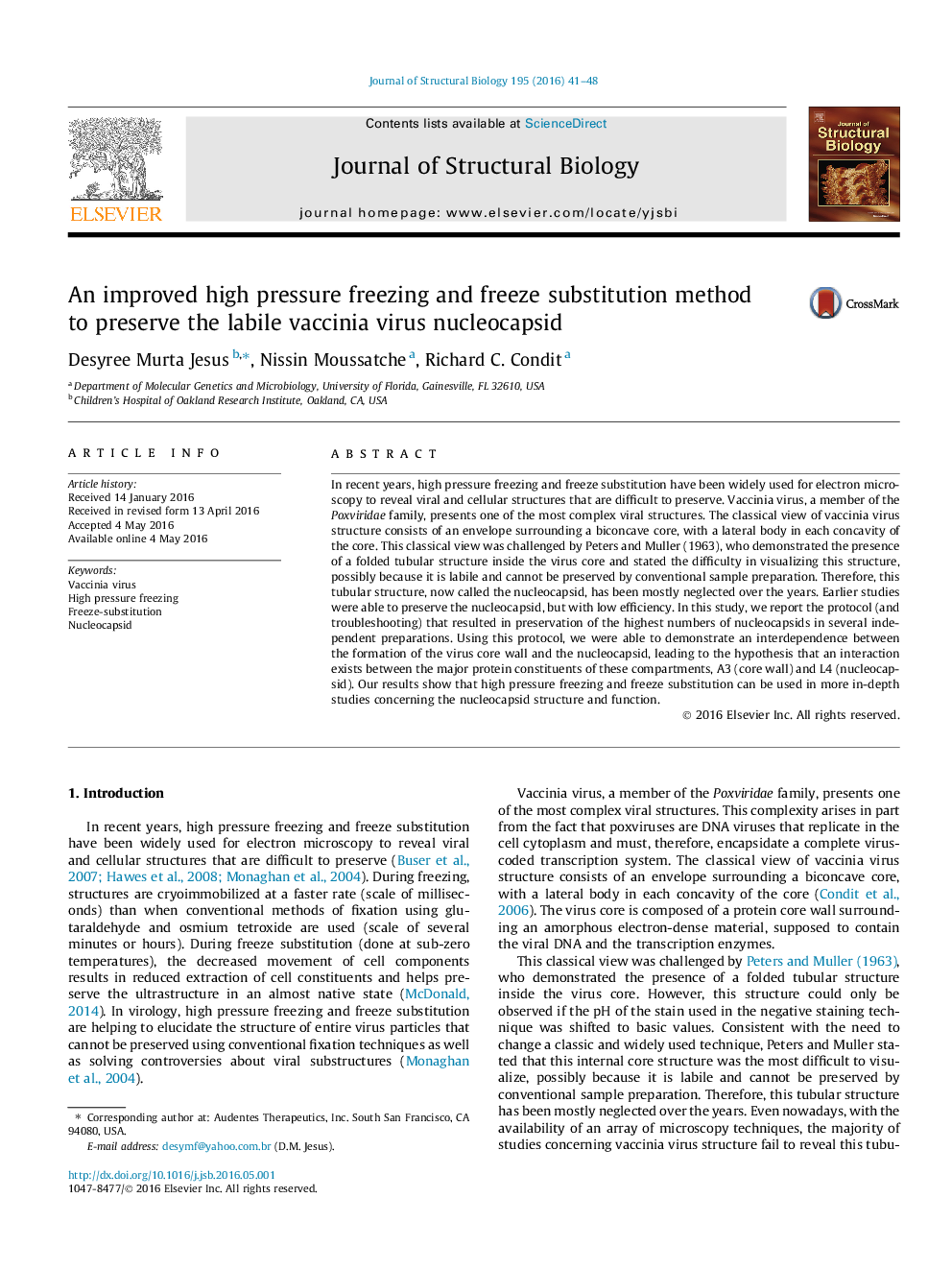| Article ID | Journal | Published Year | Pages | File Type |
|---|---|---|---|---|
| 5913719 | Journal of Structural Biology | 2016 | 8 Pages |
Abstract
In recent years, high pressure freezing and freeze substitution have been widely used for electron microscopy to reveal viral and cellular structures that are difficult to preserve. Vaccinia virus, a member of the Poxviridae family, presents one of the most complex viral structures. The classical view of vaccinia virus structure consists of an envelope surrounding a biconcave core, with a lateral body in each concavity of the core. This classical view was challenged by Peters and Muller (1963), who demonstrated the presence of a folded tubular structure inside the virus core and stated the difficulty in visualizing this structure, possibly because it is labile and cannot be preserved by conventional sample preparation. Therefore, this tubular structure, now called the nucleocapsid, has been mostly neglected over the years. Earlier studies were able to preserve the nucleocapsid, but with low efficiency. In this study, we report the protocol (and troubleshooting) that resulted in preservation of the highest numbers of nucleocapsids in several independent preparations. Using this protocol, we were able to demonstrate an interdependence between the formation of the virus core wall and the nucleocapsid, leading to the hypothesis that an interaction exists between the major protein constituents of these compartments, A3 (core wall) and L4 (nucleocapsid). Our results show that high pressure freezing and freeze substitution can be used in more in-depth studies concerning the nucleocapsid structure and function.
Related Topics
Life Sciences
Biochemistry, Genetics and Molecular Biology
Molecular Biology
Authors
Desyree Murta Jesus, Nissin Moussatche, Richard C. Condit,
